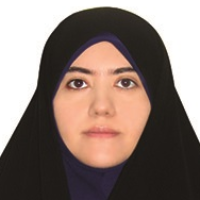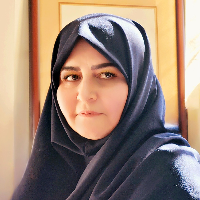The Narration of Images of Husayn Ibn Ali's Martyrdom in Lithographic Versions(Asrar al-Shahadat, Tufan al-Boka, Vasilat al-Nejat)
As a result of the establishment of the printing industry in Iran during the Qajar dynasty, more religiously significant works were made available to the general people. Most of the lithographic religious books focused on the Ashura event and the tragedy of Karbala. Dhakirs, Maddahs (religious singers), and Ta'zieh tellers used different texts and muqatils in Ashura ceremonies and rituals.The illustrators of religious literature also played a significant part in elucidating Ashura narratives, using various visual techniques; they provided the audience with a concrete and visual perspective of the Ashura description. Within the popular culture of the people, these books exhibited imagery inspired by religious beliefs, which drove the development of a distinctive style in lithography's design.The lithography in the preeminent scenes of these versions may be studied and explained using narrative sources. In the meantime, specific illustrations were made by made-up customs or widespread myths surrounding the Ashura incident, which frequently referred to lines from Safavid and Qajar literature.The word narration in this context refers to communicatiON; however, because speech may be transmitted to others by narrating, the word narration is also used to refer to words and speech in its secondary definition (Porseman website, representative of supreme leader institutions in universities, 2018). The term "Islamic narrations" refers to written passages and quotations that have been passed down to us from reliable narrators throughout the history of Islam. These narrations are one of the study sources used in this research.For a deeper comprehension of the events of Ashura, we need to consult narrators with integrity and sensitivity. Without favoring popular citations, authentic Ashurai narratives serve as a foundation for enlightenment. These resources are worthwhile and practical for authors, poets, and artists working in the Ashura genre. The analysis of the images is based on two images from the book Asrar al-Shahadat, one from the book Tufan al-Boka and one from the book Vasilat al-Nejat.This study also aims to evaluate the images of Imam Hussein’s martyrdom and his encounter with Shemr as illustrated in three old and dated lithographic versions of the books “Toufan Al-Beka’” (1853), “Wasila Al-Nejat” (1867), and “Asrar Al-Shohada” (1851) available at national libraries. The research objective includes a thematic and visual review of related images in the three intended versions. Meanwhile, the research questions are: How do the images of these versions portray the Islamic concepts and narrations related to the martyrdom of Imam Hussein (PBUH)? Moreover, how are images characterized by the visual features that describe Imam Hussein's martyrdom in the versions?In order to obtain the description of the relevant events and the increase of historical and hadith sources, some of the mentioned sources have been referred to more because of their age, validity, comprehensiveness, and continuity, such as Akhbar al-Taval by Abu Hanifa Dinawari, Tarikh al-Tabari (History of the Prophets and Kings), al-Fotouh by Ibn A'tham, Al-Amali by Al-Shaykh al-Saduq, al-Ershad by al-Shaykh al-Mufid and I'lam al-Wara bi A'lam al-Huda by Shaykh Tabarsi.The present research does not suggest the methodology of hadith studies in the paintings. However, it focuses on how the paintings reflect the pertinent themes in various written sources and what visual techniques have been employed to portray the martyrdom of Husayn ibn Ali.Husayn ibn Ali's Martyrdom convention was one of the significant occasions that drew the attention of authors and illustrators. This issue is specifically addressed and frequently has more critical information and larger dimensions when viewed in the images of the Ashura manuscripts in the National Library of Iran. The names being considered, however, were designed differently from the pictures' subjects; for instance, the word "battle" was registered for the martyrdom scene. Therefore, it is evident that the titles were introduced by scribes, while the designers did not adhere to them and functioned autonomously. In defining and embellishing the story depicted in the painting, the artists used their imagination to add details or even to design additional narratives beyond the book's text.In images depicting the scene of Husayn ibn Ali Imam's martyrdom, several tales accompany the depiction of this event. The attack on Husayn ibn Ali, his falling to the ground and facing Shimr ibn Dhi 'l-Jawshan, has been the focus of the illustrators, and our study has also addressed this crucial incident.In the scenes depicting the Imam's martyrdom, his turban was covered with blood when an arrow struck his forehead. Most prior versions focus on the sword strike to Husayn ibn Ali's head and do not mention the arrow; however, these images emphasize the arrow to the forehead. Recent works like Rozatol Shohada and Bihar al-Anwar show this topic more. In Vasilat al-Nejat, Shimr attacks Imam from behind with a dagger, a spear pierces his chest, and three of his troops fall to the ground. Enemies surrounded Husayn ibn Ali, as recorded in numerous hadiths.The narrator-illustrator portrayed Imam Husayn as heavily arrowed and lying on the ground. According to the accounts, his body was covered with arrows, and his enemies stood before him. Imam Muhammad al-Baqir describes the frontal wounds of Husayn ibn Ali Imam, indicating that he never turned his back on the enemy.A teen boy who stands with Husayn ibn Ali and rushes to the battlefield to support the Imam is described in specific versions, including Tufan al-Boka and Vasilat al-Nejat. The phrase "teenager" appears in most sources, and the images show a handsome teen.In contrast to Husayn ibn Ali's facial covering, his foes are the most enraged and anxious. Their eyes are round and protruding; they have enlarged noses and unruly beards with clenched teeth. Ubayd Allah ibn Ziyad's face is represented by a white beard, large ears, and anxiety. Long horizontal mustaches projecting from the face indicate enemies in a condition of breakdown or inflammation, similar to the visage of Qajar executioners with long mustaches and hostile expressions.Imam Husayn ibn Ali in full view, with head and body from the front and hands and feet from the sides, is the optimal design. One hand is raised to symbolize stance and determination, while the other holds a straight or angled spear. The direction of the Imam's spear is in opposition to the direction of the other lines in the painting, highlighting his static stature and larger size than the other figures.To symbolize Imam Husayn's distance from the war, he is depicted in most paintings without complete warfare equipment, such as a bow, arrow, shield, dagger, or sword. Unlike other characters, his weapons are placed on the ground or in sheaths. Zaynab bint Ali's hijab in Vasilat al-Nejat is a light-colored, long, fringed veil similar to the Qajar women's veil with loose, fringed leggings beneath and a short veil, but Qajar veils are long and narrowly laced. Zaynab bint Ali and other women, Sakina Bint Hossein and Umm Kulthum, wear full veils, and their faces are covered with cloth for their dignity.The results from this qualitative research, which uses a descriptive-analytical method and falls under documentary categories, refer to visual indicators and Islamic narrations about the martyrdom of Imam Hussein (PBUH), with some of which being credible and others taken from public beliefs of the Qajar era and the illustrator’s mind, without any credible narrations. These images have been shown to represent the narrations in agreement with the martyrdom and sacrifice in various visual forms, which are consistent with the Shia concepts and beliefs; the images are also represented by the design method, covering and tools, painting, structure and configuration and themes pertinent to the event.
-
Thematic and Visual Analysis of Three Painted Stories of Ashura (Distorted Incidents) in the Lithographic Manuscript of Asrār Al-Shahādah (1851) Kept in the National Library
, *, Seyed Abutorab Ahmadpanah
Journal of Theoretical principles of Visual Arts, -
"Analysis of the Decorative Forms and Patterns of the 15th Century Valencia Albarellos in Spain Preserved in the Metropolitan Museum of Art in New York"
Mahdiyeh Hashemi *,
Islamic Art Studies,




